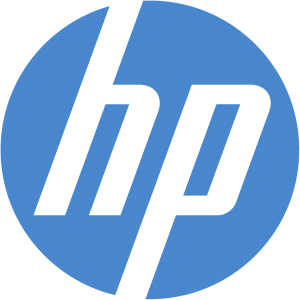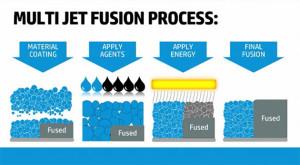HP Inc.’s MultiJet Fusion 3D Printer Will Be Open Platform and Encourage Third Party Materials Development
 The company may have split itself into two, but Hewlett-Packard remains one of the most recognizable brands in the world. To say that HP is carrying around a bit of baggage is an understatement; while brand visibility is generally considered a good thing, it can often have quite a downside. In the case of HP, there have been a few decades of high-profile problems with the company, including dropping product quality, Carly Fiorina and her disastrous leadership, a reputation for restrictive lease terms, illegal deals with Iran, poorly thought out acquisitions and did I mention Carly Fiorina? All of that has turned what used to be a tech company known for being on the cutting edge into an example of how to not run a tech company.
The company may have split itself into two, but Hewlett-Packard remains one of the most recognizable brands in the world. To say that HP is carrying around a bit of baggage is an understatement; while brand visibility is generally considered a good thing, it can often have quite a downside. In the case of HP, there have been a few decades of high-profile problems with the company, including dropping product quality, Carly Fiorina and her disastrous leadership, a reputation for restrictive lease terms, illegal deals with Iran, poorly thought out acquisitions and did I mention Carly Fiorina? All of that has turned what used to be a tech company known for being on the cutting edge into an example of how to not run a tech company.
When Meg Whitman took the reins of the company in 2011 she had her work cut out for her. While Fiorina had left six years earlier, the damage was never really undone thanks to the series of uninspired leaders and interim CEOs who followed. Whitman was able to build up a promising new facet of the business with their servers and consulting businesses, but the consumer technology side could never really shake its bad reputation and continued to flounder. While the official line for splitting HP into two different companies was to allow each half to act more nimbly to market changes, many believe that it had more to do with Whitman wanting to prop up the profitable side of HP, and cast the printer side out on its own to see if it could ever manage to swim.
While 2D printers remain the primary focus of the new printer-specific half of the company, HP Inc, it isn’t an exaggeration to say that the new company has a lot riding on their entry into the 3D printing business. The original Hewlett-Packard company has long held several patents on 3D printing technology, and even leases a few of them to 3D Systems, but despite toying with the idea for well over a decade they never made a move into the industry until now. And their decision to, wisely, avoid the desktop market is just one of several signs that they’re not the same company as Hewlett-Packard and trying to avoid the same mistakes that they made with their 2D printers all those years ago.
The MultiJet Fusion 3D printer, due out sometime this autumn, is being aimed directly at the commercial and industrial 3D printing markets, and they’re doing it by being highly competitive. In an interview with tech publication The Register, HP Inc. Chief Technology Officer Shane Wall spelled out their strategy when he pointed to the four areas that he say are hampering 3D printing’s growth. He says that the speed, price, quality of parts and the closed nature of the industry have been holding 3D printing back, and that their 3D printer will address all of those problems. It’s certainly hard to argue with his observations, and if the MultiJet Fusion printer does what it says it could have an interesting effect on the industry, as could HP Inc.’s response to the closed platform issue.
“We’ll still have print and supplies but our model will be different; we will open up the platform so people can have other supplies that come in. They’ll [other suppliers] have access to our APIs through an SDK that allows them to programme to the printer itself, and we’ll allow people to come in and do very disruptive new materials that they wouldn’t have been able to do before. [This is] very different from HP and very game changing,” Wall told the Register.
 Yes, that’s right, the company that practically invented, or at least perfected, the art of requiring proprietary materials for their products isn’t going to restrict materials for their new 3D printer. One of those many mistakes that the original HP made over the years is their 2D printers would require users purchase only HP toner and ink cartridges, often exorbitantly higher priced than comparable third party products. Many 3D printer companies are no strangers to proprietary or chipped materials themselves, and while the practice is falling out of favor, it is still more common than you’d think. So the company that designed the business model those 3D printer companies are all borrowing from is quite a shocking development.
Yes, that’s right, the company that practically invented, or at least perfected, the art of requiring proprietary materials for their products isn’t going to restrict materials for their new 3D printer. One of those many mistakes that the original HP made over the years is their 2D printers would require users purchase only HP toner and ink cartridges, often exorbitantly higher priced than comparable third party products. Many 3D printer companies are no strangers to proprietary or chipped materials themselves, and while the practice is falling out of favor, it is still more common than you’d think. So the company that designed the business model those 3D printer companies are all borrowing from is quite a shocking development.
“Anything the 3D printer market can do to move away from the razor/razor blade model of 2D printing can indeed benefit adoption. Across the board, all agree that materials and materials science will play a large role in the future of additive manufacturing and if printer vendors give material scientists the ability to work their magic, this indeed opens the door for engineers to find new ways to leverage this technology,” VP of global analysis and research at Context, Chris Connery points out.
The MultiJet Fusion 3D printer is launched with a surprisingly limited set of material options that starts with thermoplastic materials, and ends with thermoplastic materials. HP Inc. is on their own doing new material testing and development, but it is clear that they want to let materials developers who have been doing this for decades have a crack at their technology. They’re hoping third parties cover the gaps in their materials options, and it’s honestly a refreshing to see a large company learning a new trick. Only time will tell if HP Inc.’s move into the 3D printing industry will pay off, or if it will stumble out of the gate, but at least the company is trying something new rather than relying on all their old tricks.
What are your thoughts on HP’s foray into the 3D printing realm? Discuss in the HP 3D Printing forum over at 3DPB.com.
Subscribe to Our Email Newsletter
Stay up-to-date on all the latest news from the 3D printing industry and receive information and offers from third party vendors.
You May Also Like
3D Printing Webinar and Event Roundup: April 21, 2024
It’s another busy week of webinars and events, starting with Hannover Messe in Germany and continuing with Metalcasting Congress, Chinaplas, TechBlick’s Innovation Festival, and more. Stratasys continues its advanced training...
3D Printing Webinar and Event Roundup: April 14, 2024
We’re starting off the week’s 3D printing webinars and events at ASTM AMCOE’s 11th Snapshot Workshop and MACH Exhibition. Stratasys continues its advanced training courses, SME is holding a virtual...
Polly the Duck to Receive 3D Printed Bill Prosthetic
In Williamson County, Texas, a story of resilience, innovation, and cross-community effort is unfolding, illustrating the bond between humans and wildlife. All Things Wild, a wildlife rehabilitation center, has been...
3D Printing News Briefs, April 3, 2024: Kickstarter FDM 3D Printer, Artificial Eyes, & More
In 3D Printing News Briefs today, we’re talking about an FDM 3D printer on Kickstarter, advancements in artificial eye creation, and 3D printed solenoids for electromagnets. Then we’ll move on...
































